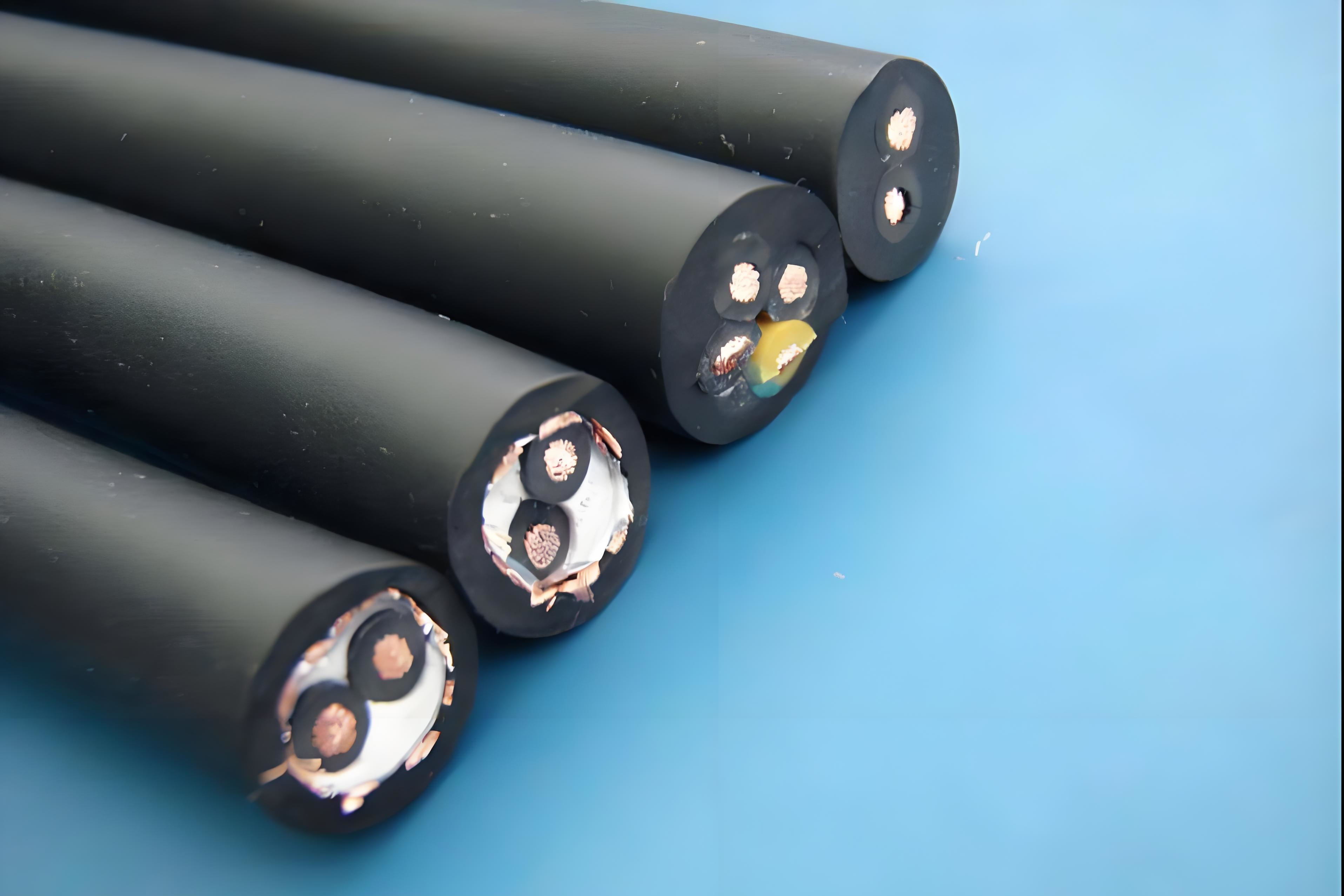Cables are an indispensable component in electrical engineering, playing critical roles across modern society, from power transmission to data communication and automation control. For different projects and environments, selecting the right cable is essential; this choice affects system safety, lifespan, and maintenance costs. Trong bài viết này, we will explore common cable types and their applications in electrical engineering to help you find the right cable for various scenarios.

Basic Cable Classifications
Cables can generally be divided into categories based on voltage levels and usage: low-voltage, medium-voltage, high-voltage, and specialty cables. Each cable type has unique features suitable for specific applications, which we’ll explore in detail below.
Low-Voltage Cables (LV Cables)
Low-voltage cables, typically used in systems up to 1kV, are commonly employed in buildings for lighting, power supply, and other everyday needs. In both commercial and residential projects, low-voltage cables are widely used due to their durability, cost-effectiveness, and flexibility. These qualities make them ideal for wiring and connections within structures.
Medium-Voltage Cables (MV Cables)
Medium-voltage cables are suitable for electrical systems ranging from 1kV to 35kV, commonly seen in industrial power facilities and medium-scale urban grids. These cables are essential in substations and power distribution systems. Due to the higher voltage requirements, MV cables are designed with premium insulation materials to meet stricter performance and safety standards.
High-Voltage Cables (HV Cables)
High-voltage cables are employed in systems above 35kV and serve as the core infrastructure for long-distance power transmission. With rigorous insulation standards to ensure reliability and safety, HV cables are crucial in long-distance transmission systems, particularly in large-scale power grids.
Specialty Cables
Specialty cables, such as mineral-insulated, fire-resistant, Và low-smoke zero-halogen (LSZH) cables, are designed for specific environments and unique purposes. These cables offer advanced properties, like fire resistance, high-temperature tolerance, and corrosion resistance, making them suitable for challenging environments such as tunnels, subways, and nuclear facilities where safety and reliability are paramount.

Common Cable Types and Their Application Areas
The wide variety of cable types translates into their broad applications across different industries. Here are some of the most common types and their specific roles in electrical engineering.
Cáp điện
Power cables are the backbone of electrical transmission and are widely used in power generation and distribution systems. When selecting power cables, it’s essential to consider factors like current-carrying capacity and insulation quality to ensure stability and safety under high loads.
Communication Cables
Primarily used for data transmission, Cáp giao tiếp include fiber optic and coaxial cables, commonly found in telecommunications and data center setups. As the demand for high-speed data grows, communication cables with high transmission speed and interference resistance are increasingly important, with fiber optics becoming a top choice.
Control Cables
Control cables are used in automation systems, connecting sensors and controllers within industrial automation setups. These cables require excellent interference resistance and flexibility to ensure reliable signal transmission in complex systems, such as those found on automated production lines.
Instrumentation Cables
Instrumentation cables are designed for precise signal transmission in industries that require accurate control, such as petrochemicals and pharmaceuticals. These cables are often used in environments with high temperatures and pressures, providing interference resistance and high precision to ensure data integrity.
Building Wires
Building wires are used within commercial and residential structures for power and lighting needs. These cables are often made with fire-resistant and easy-to-install materials, such as PVC or LSZH, meeting safety requirements within building environments.

Key Factors to Consider When Choosing Cables
Projects vary widely in their cable requirements, so selecting the right cable involves evaluating several critical factors:
Voltage Level
Voltage level determines the type of cable needed, as higher voltages require superior insulation for safe and effective system performance.
Environmental Conditions
Cables should be suited to their specific environment. Ví dụ, fire-resistant or corrosion-resistant cables are ideal in high-temperature, humid, or corrosive settings.
Cable Size and Current Capacity
The size of the cable directly affects its current-carrying capacity. Ensuring the cable can handle the electrical load of the system prevents overheating and potential failure.
Durability and Maintenance Requirements
Consider the cable’s durability and maintenance needs, especially for applications in harsh environments, where higher-quality materials and specialized construction can help reduce long-term maintenance costs.

Application Examples of Cables in Typical Scenarios
To better understand cable applications, here are examples of different types of cables used in real-world scenarios.
High-Voltage Cables in Urban Power Grids
High-voltage cables ensure stable power transmission from generation stations to urban areas, using robust insulation and high tensile strength to support long-distance distribution.
Control Cables in Industrial Automation
Control cables are used to connect equipment and control systems in industrial automation. With strong interference resistance and durability, these cables allow for efficient and consistent operations within automated environments.
Communication Cables in Data Centers
High-speed data transfer within data centers relies on fiber optic and coaxial cables. The choice of communication cables directly impacts the efficiency of data transmission, making fiber optics increasingly prevalent.
Instrumentation Cables in Petrochemical Plants
In challenging environments like petrochemical facilities, instrumentation cables provide precise monitoring and control under high temperatures and corrosive conditions.

Future Trends and Developments in Cable Technology
With ongoing technological advancements, cable technology continues to evolve to meet increasingly complex application needs.
Renewable Energy Cables
As renewable energy adoption grows, the demand for solar and wind energy cables has increased. Future cable designs will emphasize efficiency and eco-friendliness.
Smart Cables and IoT Integration
Smart cables capable of automatic monitoring and remote control are ideal for smart cities and smart grids. The integration of IoT with cable technology presents new opportunities in power management.
New Materials and Environmentally-Friendly Cables
LSZH cables, made from eco-friendly materials, are gaining popularity due to their fire resistance and low toxicity, particularly in public spaces and residential buildings. Future developments in the cable industry will likely focus on environmental sustainability and safety.
Phần kết luận
Understanding the different types and applications of cables helps you make informed choices based on project needs, ensuring system safety and efficiency. Ongoing innovations in cable technology offer new possibilities in electrical engineering, with renewable energy, smart technology, and eco-friendly solutions driving the evolution of power systems. Whether renewable energy cables, smart cables, or environmentally friendly cables, each will play a significant role in shaping the future of electrical infrastructure.


